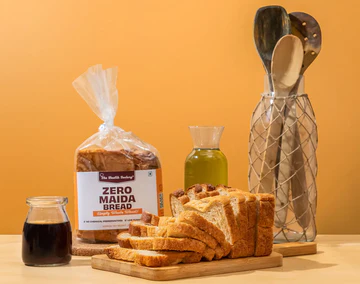In a country where “healthier” food labels are increasingly driving consumer choices, new concerns have emerged over the very products marketed as safe for blood sugar control. Multigrain breads and “zero maida” (refined flour–free) options, often considered healthy alternatives to white bread, are now under scrutiny from health experts and diabetologists.
While these products are sold as guilt-free and diet-friendly, doctors warn they may be silently contributing to unexpected blood sugar spikes.
The Multigrain Myth: All That Glitters Isn’t Whole Grain
Despite clever branding, multigrain bread often contains refined flours made from several grains—but not necessarily whole grains. According to leading nutritionists, many so-called zero maida breads are simply a mix of refined wheat, starches, and binding agents that act similarly to white bread in the bloodstream.
“The term ‘multigrain’ sounds healthy but just means the bread is made with more than one grain, not necessarily whole or unprocessed grains,” said Dr. Shweta Joshi, a clinical nutritionist. “And in most commercial brands, these grains are still refined.”
The high glycemic index (GI) of such refined carbs can cause sudden spikes in blood glucose, especially dangerous for individuals with diabetes or prediabetes.
Case Study: A Patient’s Blood Sugar Dilemma
A recent case shared by a Delhi-based endocrinologist tells of a patient who replaced regular bread with “multigrain,” ate protein-packed nut butters, and switched to diet snacks—all without any improvement in fasting blood glucose. Upon review, hidden sugars and refined starches in these supposedly ‘healthy’ products were to blame.
“What people forget is that ‘no maida’ doesn’t mean no sugar impact,” said the physician. “When these breads are loaded with maltodextrin, corn syrup, or added fibers without whole grains, they don’t support glycemic control.”
How to Read Beyond the Label
Health experts suggest being label-smart and understanding the ingredients behind fancy branding. Here’s what to look out for:
- Check the ingredients: The first ingredient should be “100% whole wheat” or “whole grain flour,” not “wheat flour” or “refined flour.”
- Mind the carbs-to-fiber ratio: A ratio under 5:1 (e.g., 20g carbs to at least 4g fiber) indicates a slower glucose response.
- Beware of hidden sugars: Brown rice syrup, honey, molasses, and even fruit concentrates can raise glucose levels quickly.
- Sourdough or sprouted breads are better choices due to their fermentation process, which improves digestion and lowers GI.
The Bigger Picture: Wellness Labels Need Regulation
With the wellness industry booming in India, experts call for stricter regulation of food labels. Buzzwords like “zero maida,” “gluten-free,” or “low sugar” are often used to mislead consumers into thinking the product is blood sugar–friendly.
“Terms like ‘diet bread’ or ‘fit cookies’ should not be allowed without clear nutritional evidence,” said Dr. Joshi. “We need mandatory disclosures about glycemic load and processed ingredients.”


